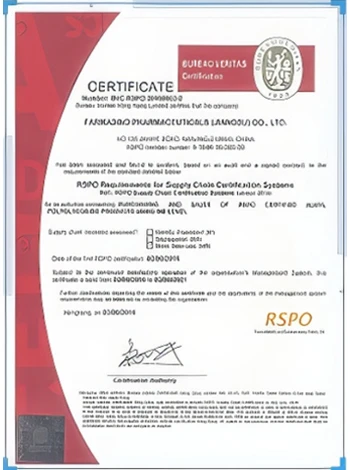



chlorine dioxide water
The Role of Chlorine Dioxide in Water Treatment
Chlorine dioxide (ClO2) has gained significant attention in recent years for its effectiveness as a water treatment disinfectant. Unlike traditional chlorine, which has been widely used in water sanitation for decades, chlorine dioxide presents distinct advantages, leading to its increased application in municipal water systems, industrial settings, and even in residential water purification processes.
What is Chlorine Dioxide?
Chlorine dioxide is a yellowish-green gas at room temperature and is highly soluble in water. It is a strong oxidizing agent, which enables it to effectively kill bacteria, viruses, fungi, and protozoa in water. Its chemical properties allow it to inactivate pathogens by disrupting their cellular processes. Unlike chlorine, which can form harmful chlorinated byproducts, chlorine dioxide is less likely to react with organic materials in water, making it a safer option in many scenarios.
Advantages of Chlorine Dioxide in Water Treatment
1. Effective Disinfection Chlorine dioxide is highly effective against a wide range of microorganisms, including those resistant to traditional chlorine. This includes certain bacteria, viruses, and protozoa such as Giardia and Cryptosporidium, which are notorious for causing waterborne diseases. Its potency means that chlorine dioxide can achieve required disinfection levels with lower doses compared to chlorine.
2. Reduced Disinfection Byproducts One of the major concerns with chlorine use in water treatment is the formation of harmful byproducts, such as trihalomethanes (THMs) and haloacetic acids (HAAs), which can pose health risks. Chlorine dioxide significantly reduces the formation of these byproducts, making it a safer choice for long-term water quality.
3. Broad pH Range Chlorine dioxide is effective over a wide pH range (5 to 10), allowing it to maintain its disinfection capabilities in various water conditions. This flexibility makes it suitable for treating different water sources, including surface water, groundwater, and wastewater.
4. Taste and Odor Neutralization Another advantage is its ability to improve the taste and odor of drinking water. Chlorine dioxide does not impart the strong taste and smell associated with chlorine, leading to an improved sensory experience for consumers.
chlorine dioxide water

5. Biofilm Control Biofilms, which are clusters of microorganisms that adhere to surfaces in water systems, can be challenging to manage. Chlorine dioxide has demonstrated effectiveness in disrupting and controlling biofilms, thus enhancing the overall hygiene of water distribution systems.
Applications in Water Treatment
Chlorine dioxide is used in various applications, from municipal water treatment plants to food processing industries and even legionella control in cooling towers. In municipal systems, it is often used as a primary disinfectant or a secondary aid in systems where chlorine is the primary disinfectant. Many cities have adopted chlorine dioxide due to its effectiveness in maintaining water quality and safety.
In industrial settings, chlorine dioxide plays a crucial role in maintaining the hygiene of water used in food processing and beverage production. Its ability to effectively eliminate pathogens ensures products are safe for consumption while minimizing the risk of foodborne illnesses.
Safety and Handling
While chlorine dioxide is a powerful disinfectant, it must be handled with care. Due to its oxidizing properties, it can be hazardous in concentrated forms. Proper safety measures need to be taken during its storage, transportation, and application. Equipment for dilution and delivery must be regularly maintained to prevent leaks and exposure.
Conclusion
Chlorine dioxide represents a promising alternative to traditional water disinfectants. Its effectiveness against a broad spectrum of microorganisms, combined with the reduced formation of harmful byproducts, makes it a valuable tool in the quest for safe and clean drinking water. As communities around the world increasingly prioritize water quality and safety, the adoption of chlorine dioxide in water treatment processes is expected to grow, leading to healthier outcomes for populations and the environment alike. With continued research and technological advancements, chlorine dioxide may pave the way for a new standard in water purification practices.
-
Why Sodium Persulfate Is Everywhere NowNewsJul.07,2025
-
Why Polyacrylamide Is in High DemandNewsJul.07,2025
-
Understanding Paint Chemicals and Their ApplicationsNewsJul.07,2025
-
Smart Use Of Mining ChemicalsNewsJul.07,2025
-
Practical Uses of Potassium MonopersulfateNewsJul.07,2025
-
Agrochemicals In Real FarmingNewsJul.07,2025
-
Sodium Chlorite Hot UsesNewsJul.01,2025










